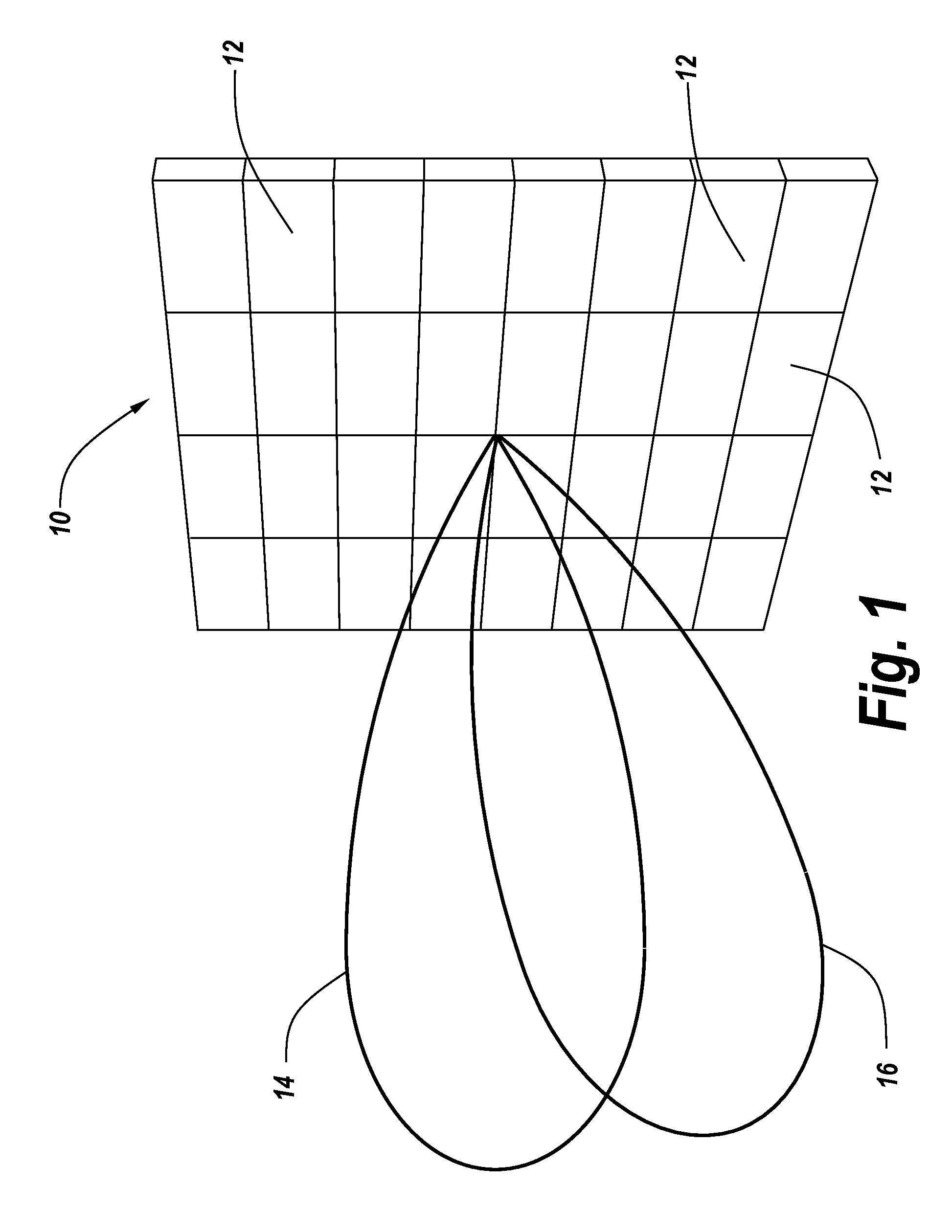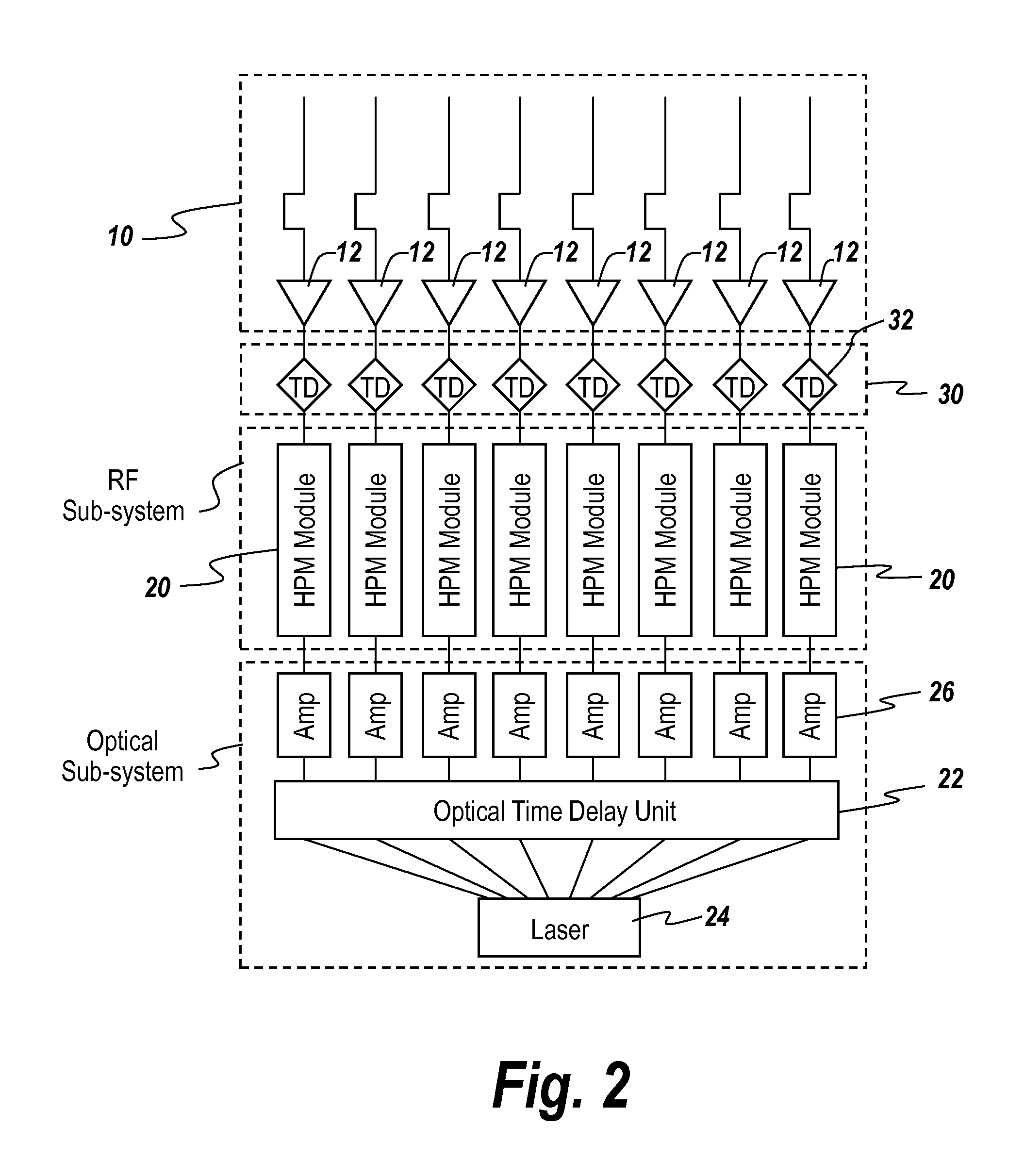High-Power Microwave Beam Steerable Array and Related Methods
a beam steerable array and high-power microwave technology, applied in the direction of instruments, antennas, communication jamming, etc., can solve the problems of limited mission planning ability, impracticality of hpm source size, and limited number of elements which can be used in a given system, so as to increase the number of high-power microwave pulses
- Summary
- Abstract
- Description
- Claims
- Application Information
AI Technical Summary
Benefits of technology
Problems solved by technology
Method used
Image
Examples
Embodiment Construction
[0025]To improve on the shortcomings of the conventional art, and provide steerability to high-power pulses coming from an array, the subject invention involves pulse generation timing including an optical time delay or RF time delay, or both. As to optical time delay, modules having laser controlled photoconductive switches may be used. As to RF time delay, delay controllable transmission lines may be used. In each case, pulses emanating from the array elements may have the requisite phase delay for beam steering. As will be seen below, the two delay systems can be used independently or together.
[0026]In the present disclosure, there may be two different types of mechanisms to control the timing of the pulses that are emitted. The two mechanisms to control the timing of the leading edges of these pulses involves either (1) the use of an optical delay line, so that the pulses to each of the modules in the array are precisely delayed with respect to each other to provide the beam ste...
PUM
 Login to View More
Login to View More Abstract
Description
Claims
Application Information
 Login to View More
Login to View More - R&D
- Intellectual Property
- Life Sciences
- Materials
- Tech Scout
- Unparalleled Data Quality
- Higher Quality Content
- 60% Fewer Hallucinations
Browse by: Latest US Patents, China's latest patents, Technical Efficacy Thesaurus, Application Domain, Technology Topic, Popular Technical Reports.
© 2025 PatSnap. All rights reserved.Legal|Privacy policy|Modern Slavery Act Transparency Statement|Sitemap|About US| Contact US: help@patsnap.com



